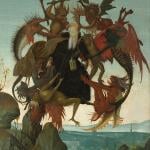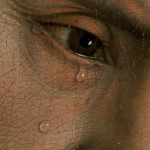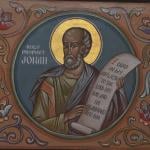Rome, Italy, May 24, 2015 / 04:02 pm (CNA/EWTN News).- Zhang Xihuan doesn't know what was going through her mind when she swallowed a mouthful of the pesticide stored behind the staircase in her home in rural Shandong province. Maybe she was thinking of her neighbors who had ostracized her when she was diagnosed with hepatitis B. Or perhaps she was thinking of the hours spent scraping a living by collecting coal that had fallen on the road en route to nearby mines. Regardless, when Xihuan brought the bottle of Yang Hua Le Guo pesticide to her lips in May 2009, she was doing what countless Chinese women had done before her and would do after: taking their own lives rather than face the harsh reality of their society. The only difference was that Xihuan would live to tell her story to the World Health Organization. China accounts for 26 percent of suicides worldwide, according to WHO estimates. Suicide is the fifth leading cause of death in the country and the suicide rate in women is 25 percent higher than in men. Young rural women are most at risk and their poison of choice – or convenience – is pesticide. So why are hundreds of Chinese women taking their own lives every day? Women's rights activist Reggie Littlejohn told CNA that in addition to domestic violence and discrimination, women in China are traumatized by the Chinese Communist Party’s brutal enforcement of its one-child policy. Since its inception 35 years ago, China’s one-child policy has killed between 360 and 400 million people. Littlejohn, who is the founder and president of the organization Women's Rights Without Frontiers, believes the Chinese Communist Party is using its one-child policy as a means of social control “masquerading as population control.” “I would absolutely say that (the CCP) are maintaining their grip on power through shedding the blood of innocent women and children,” Littlejohn said. She warned the policy is also subtly breaking down relationships and trust in Chinese society through its system of paid informants who expose illegally pregnant neighbors and family members. And, Littlejohn warned, the infrastructure of China’s Family Planning Police stamps out any form of dissent in the country. Littlejohn called on the international community to speak out against China’s one-child policy, particularly in light of the 35th anniversary of the policy’s inception. She said any international effort against the policy would bring hope to persecuted women in China. To see that the international community “is standing by their rights” would give women a lot of hope “since clearly the people within China are not doing so,” Littlejohn said. “It would give (women) a hope and something to hold onto, that maybe these atrocities will end.” This year also marks the 20th anniversary of a conference in Beijing hosted by the United Nations Commission on the Status of Women. Conference participants outlined twelve priorities for the advancement of women’s rights in China; including forced abortion. However, Littlejohn told CNA that since the 1995 conference “Beijing has completely ignored the issue of women’s rights” and has made “no progress whatsoever toward women’s rights.” “In the last 20 years (China has) done hundreds of millions of abortions, most of them forced, hundreds of millions of sterilizations, most of them forced, hundreds of millions of contraceptive coils inserted into women, many of them forced,” she said. “It’s very important for the United Nations, the U.S. congress and the entire international community to grab hold of this and hold a mirror up to them and say this is what you promised in Beijing (in 1995), and this is what you’ve done, which is nothing.” Littlejohn specifically called for an increase in the “political will” to act on a 2013 agreement of the U.N. women’s commission asking governments and NGOs to condemn “state-sponsored, coercive population control,” including forced abortion, forced sterilization and forced contraception. Although European Parliament has also passed a resolution condemning forced abortion in China, Littlejohn said to have a commitment on paper isn’t enough, and that governmental bodies need to take a greater stand in putting pressure on China to end the one-child policy. She also called on the international community to cut funding for the United Nations Population Fund, which she said has been working “hand-in-hand” with the CCP since the policy’s inception. The UNFPA “has been entirely opaque in terms of their activities in China. They argue that they don’t do forced abortions. What are they doing to counter it? If you’re not actively fighting against an atrocity, but are in a very secretive way somehow supporting a structure that forcibly aborts women, you are complicit with those forced abortions,” she said. “So I think we can put a lot of pressure on the UNFPA either to pull out of China or to be transparent about their activities in China and demonstrate that they are actively and effectively advocating against coercive population control, because if they are advocating against it, it’s completely ineffective.” Littlejohn’s organization Women’s Rights Without Frontiers combats gendercide, sex slavery, and forced abortions and sterilizations in China. Littlejohn spoke with CNA in Rome, where she met with Vatican officials to discuss her April 30 congressional hearing on China’s one-child policy. She is also presenting this weekend at the Pontifical Council for Justice and Peace’s two-day conference on women and the Sustainable Development Goals (SDGs). Read more















